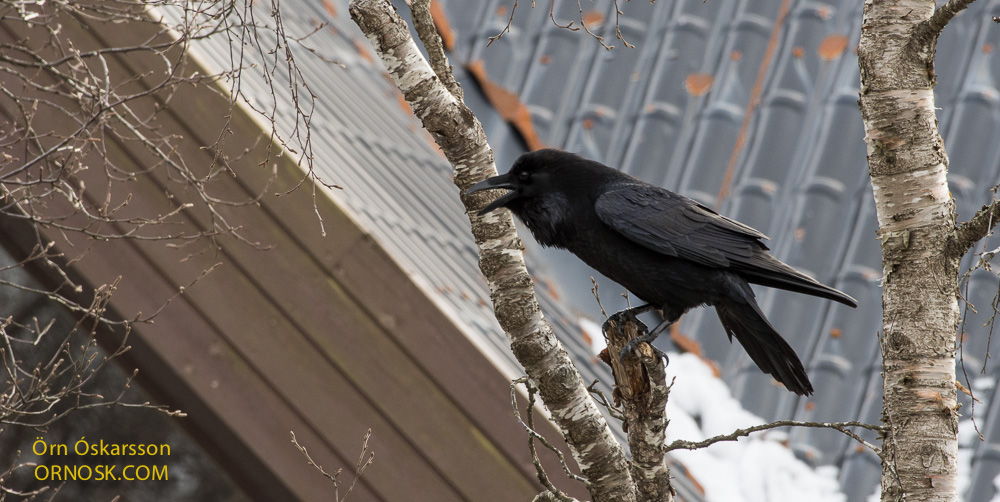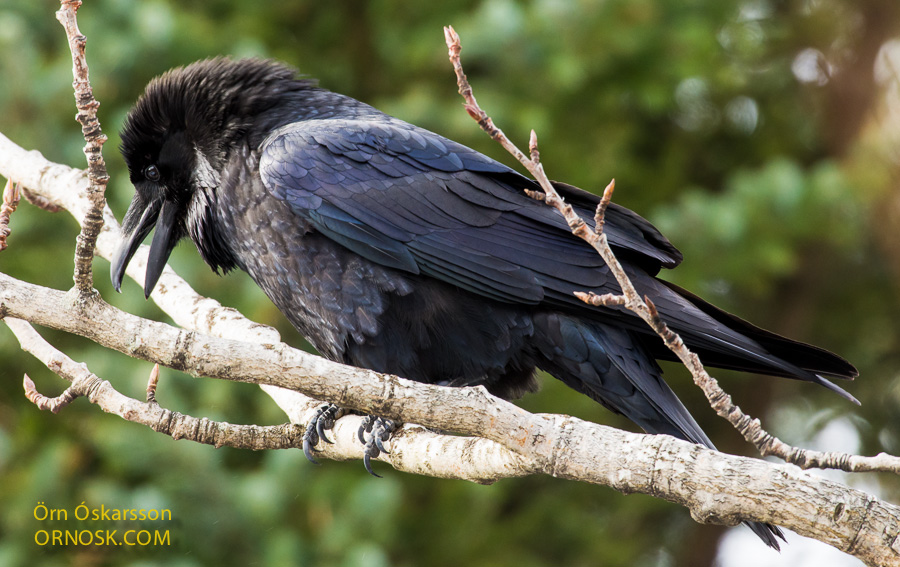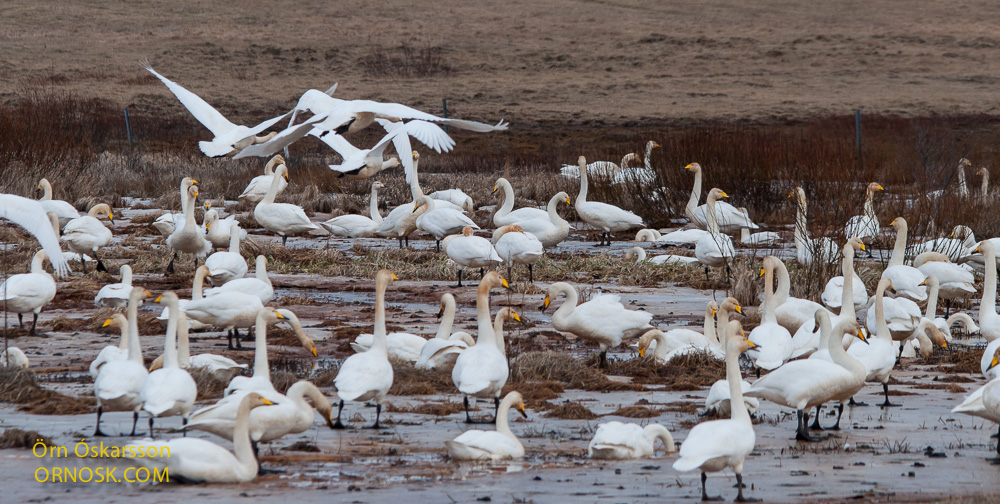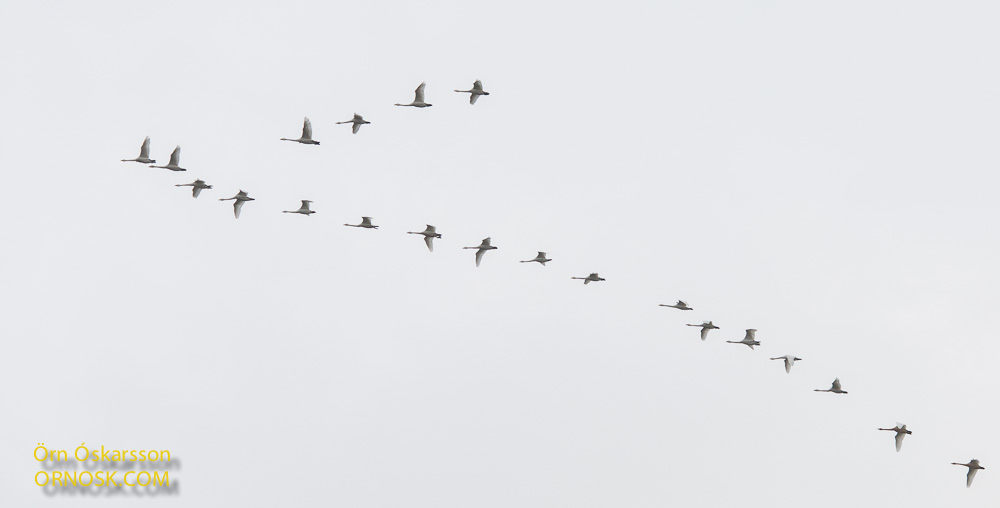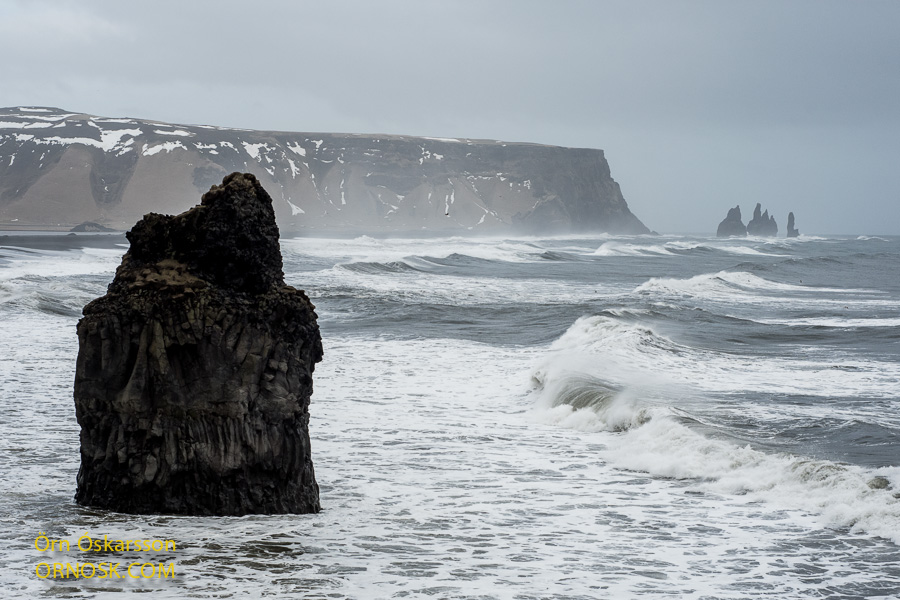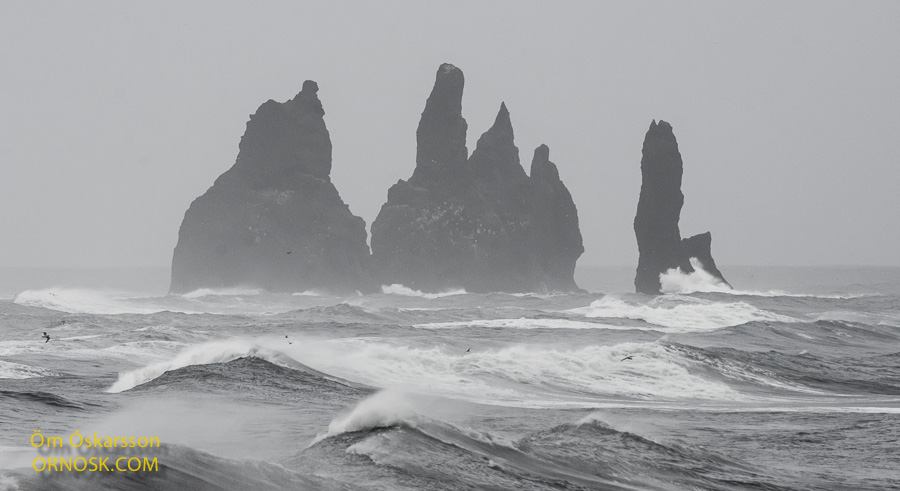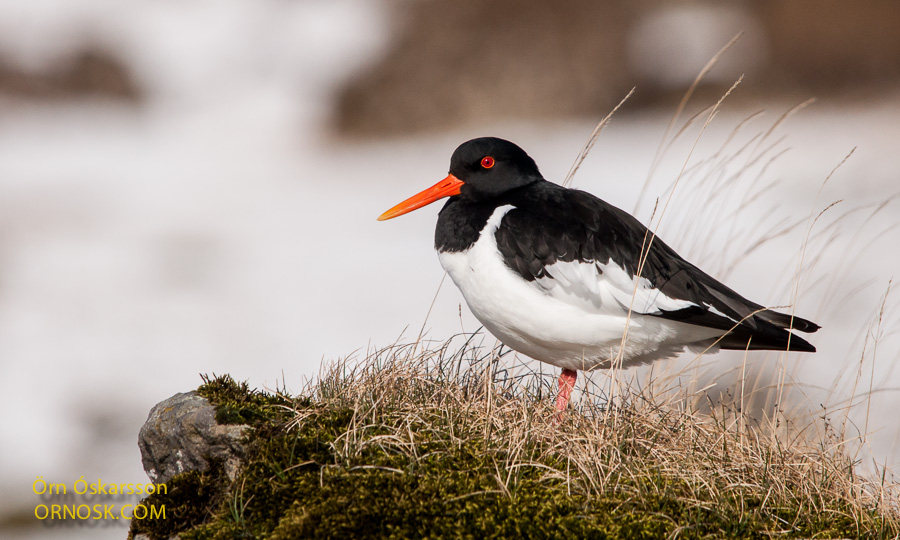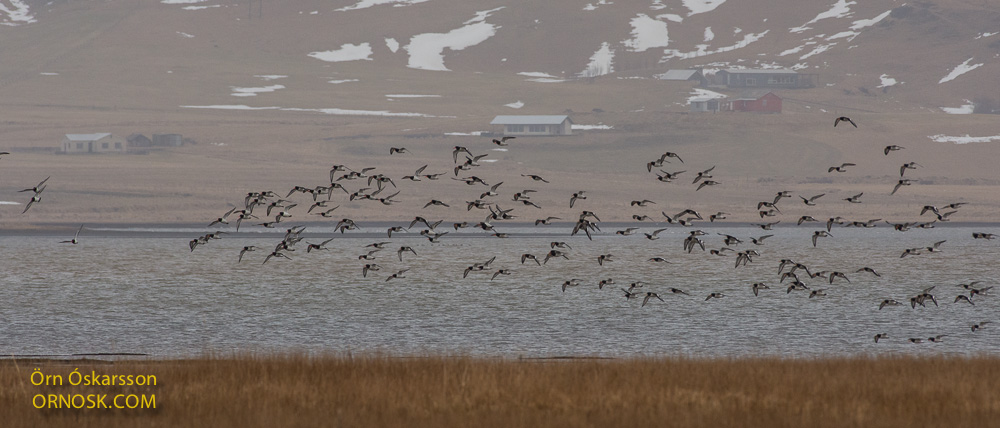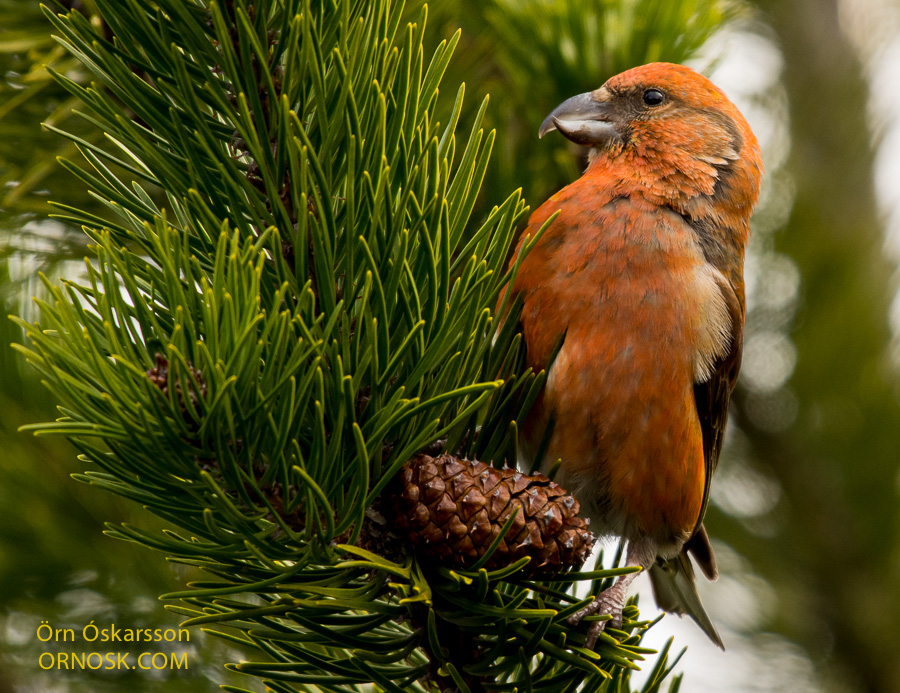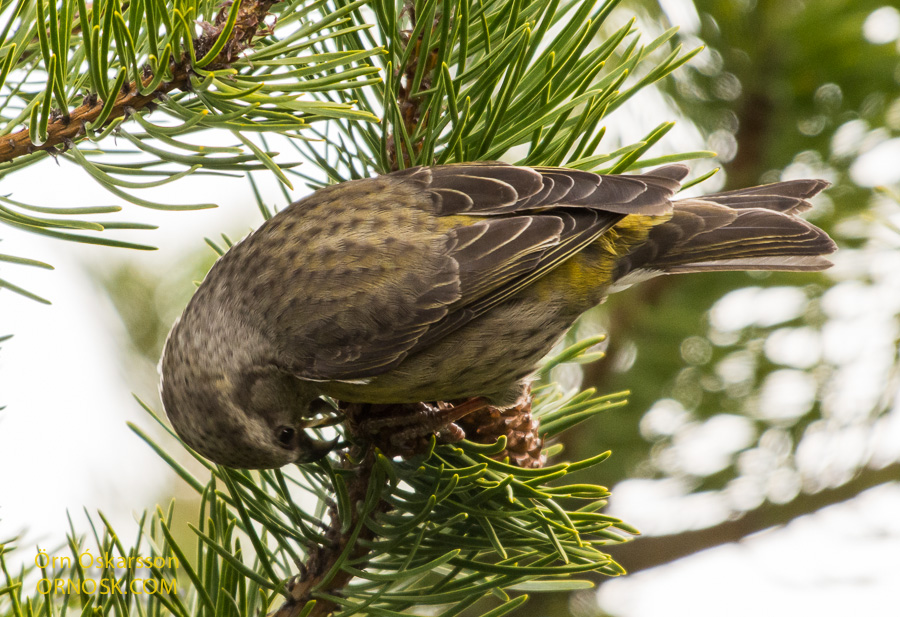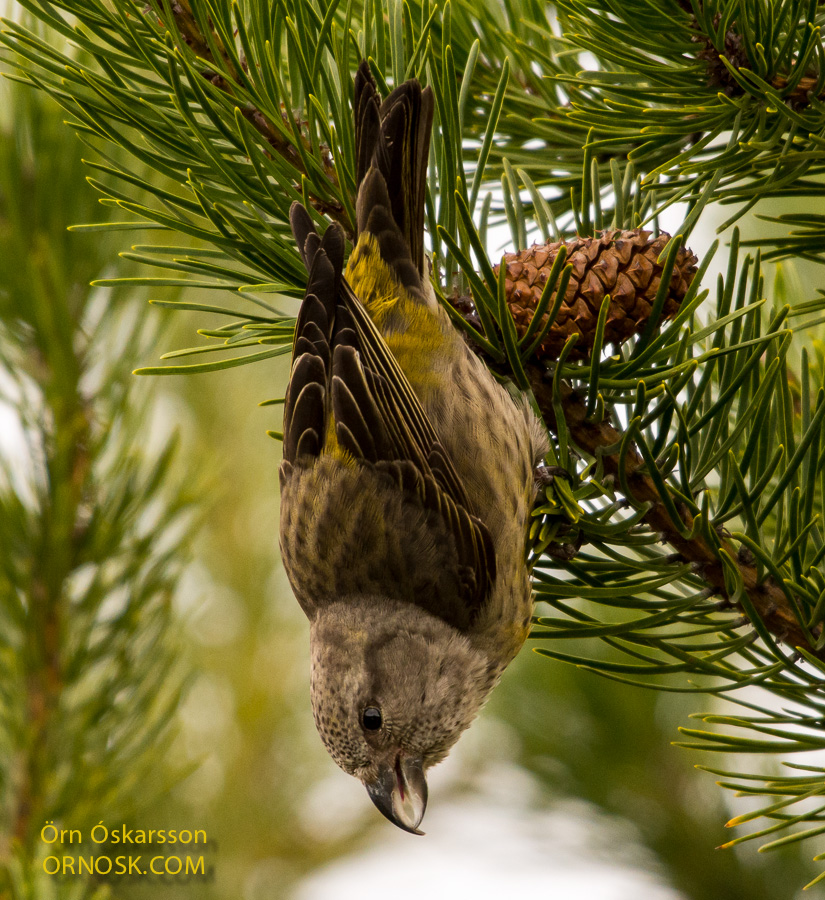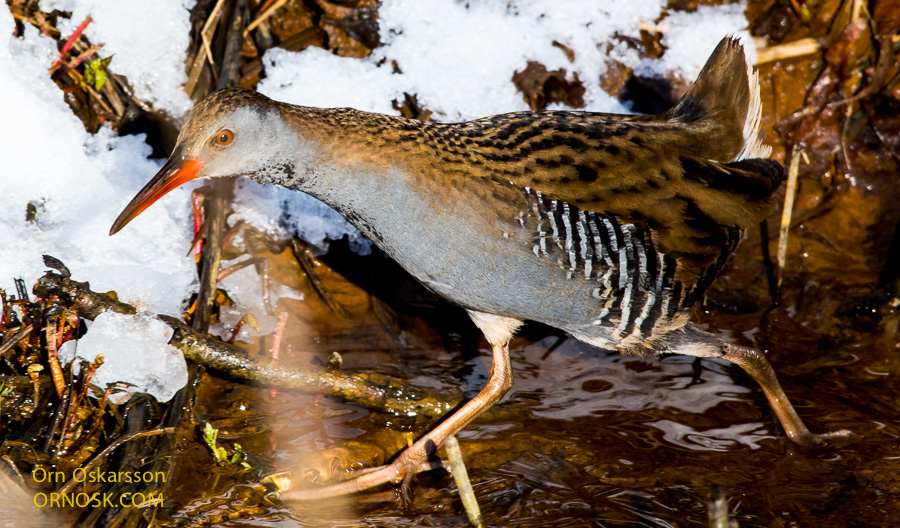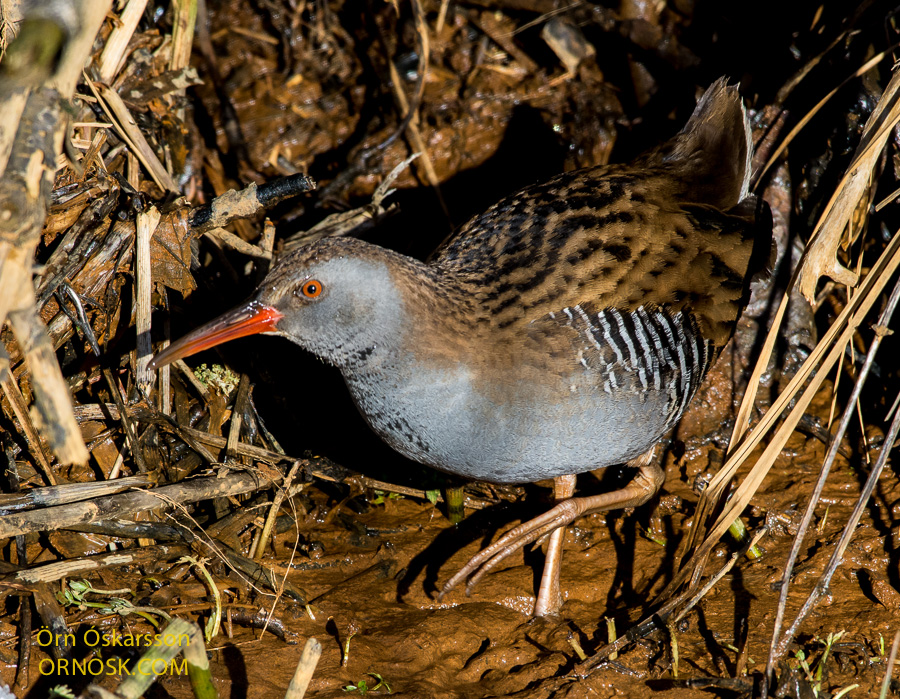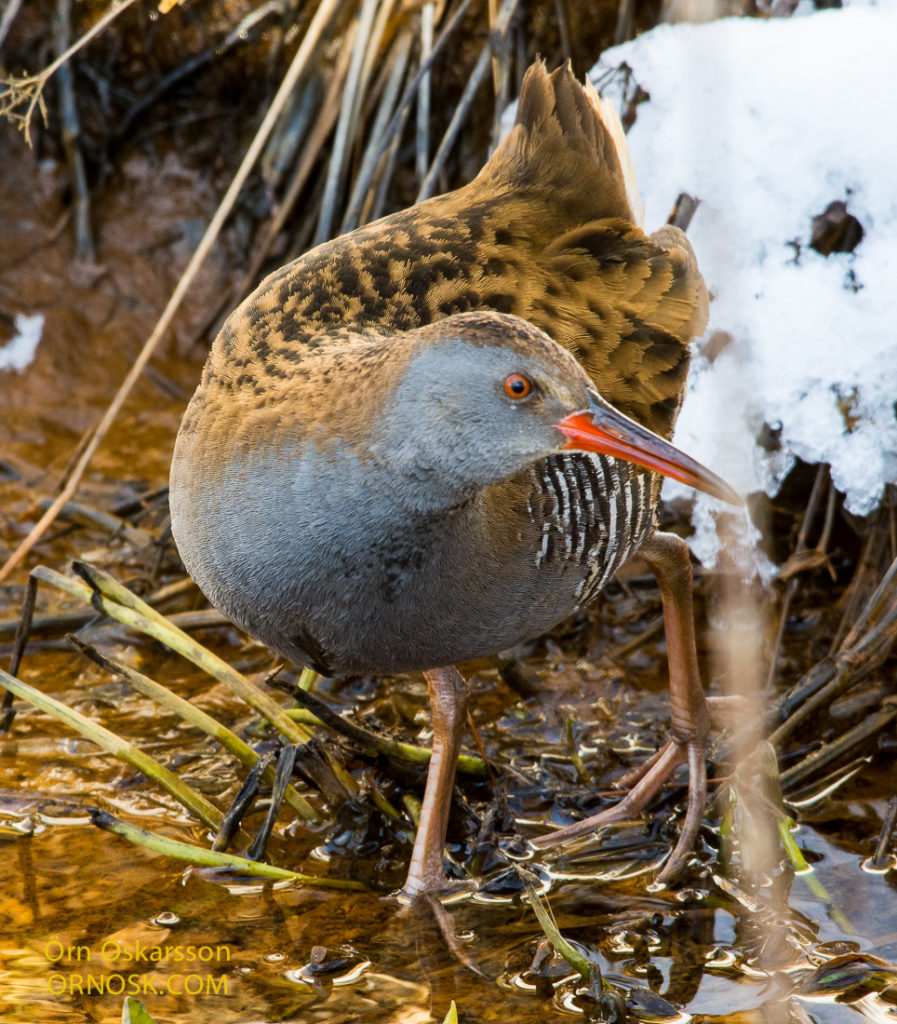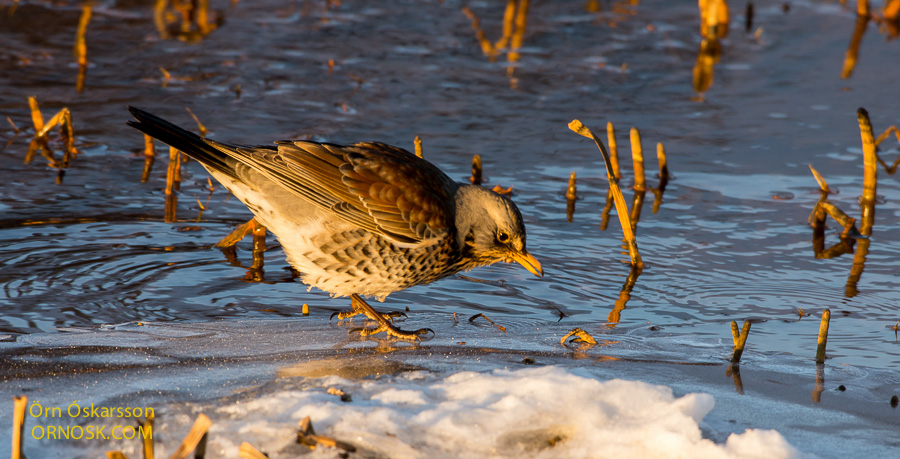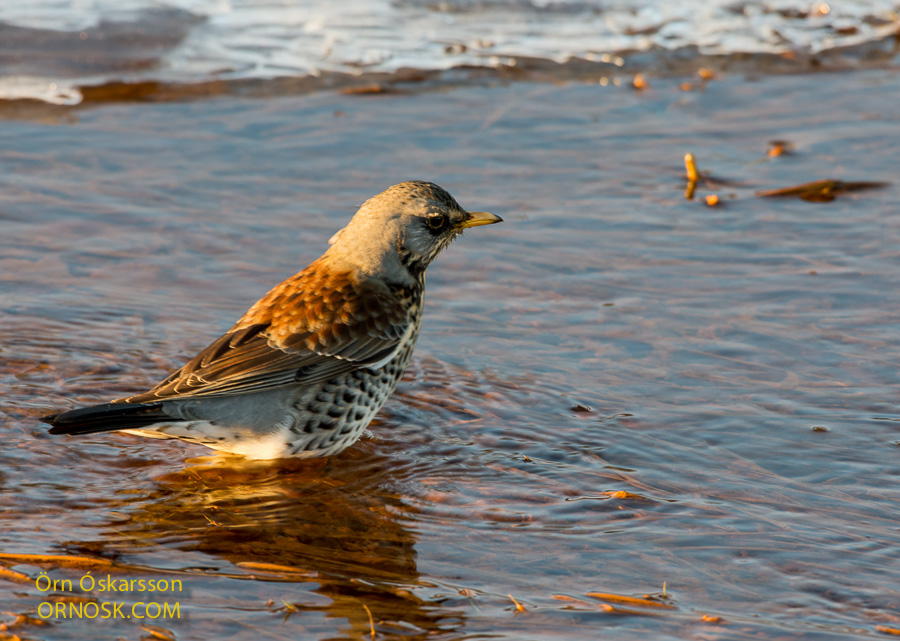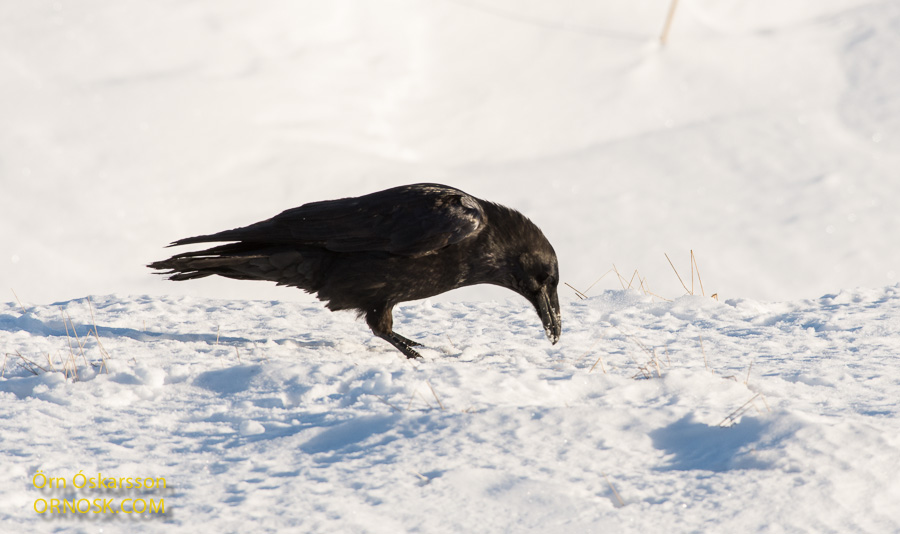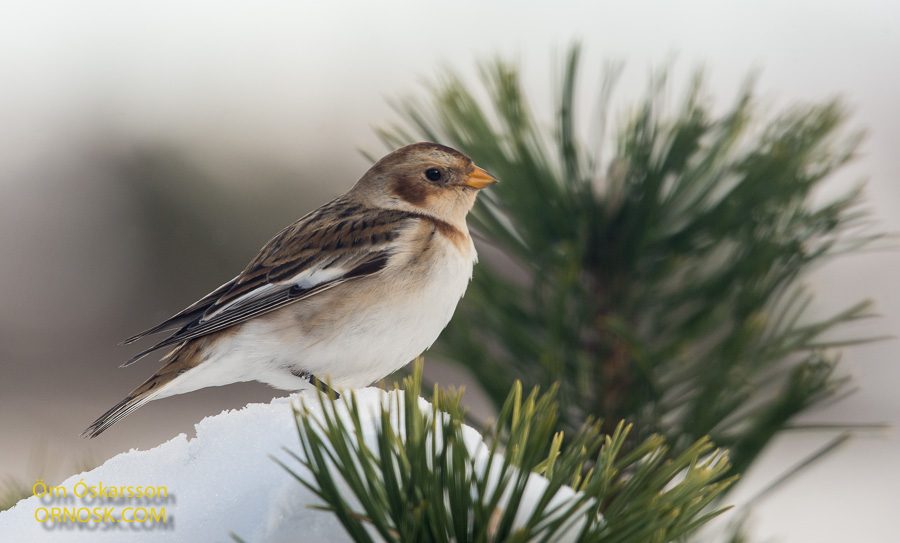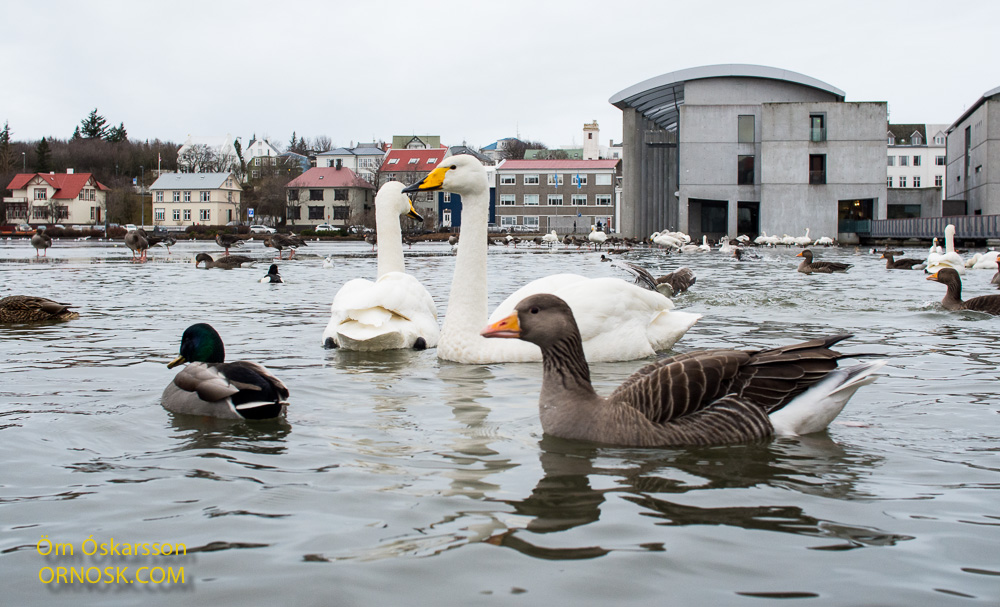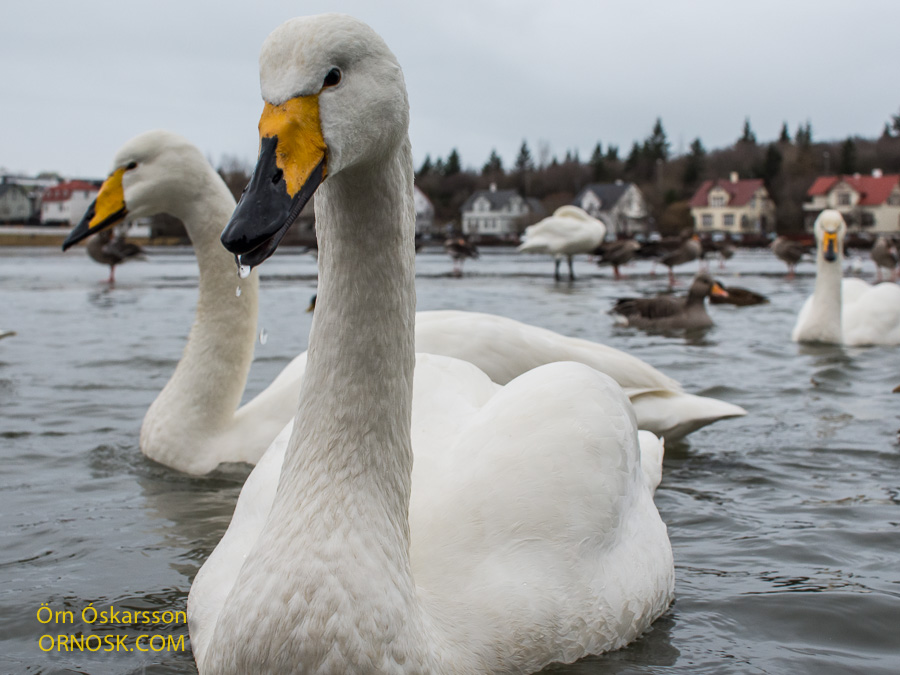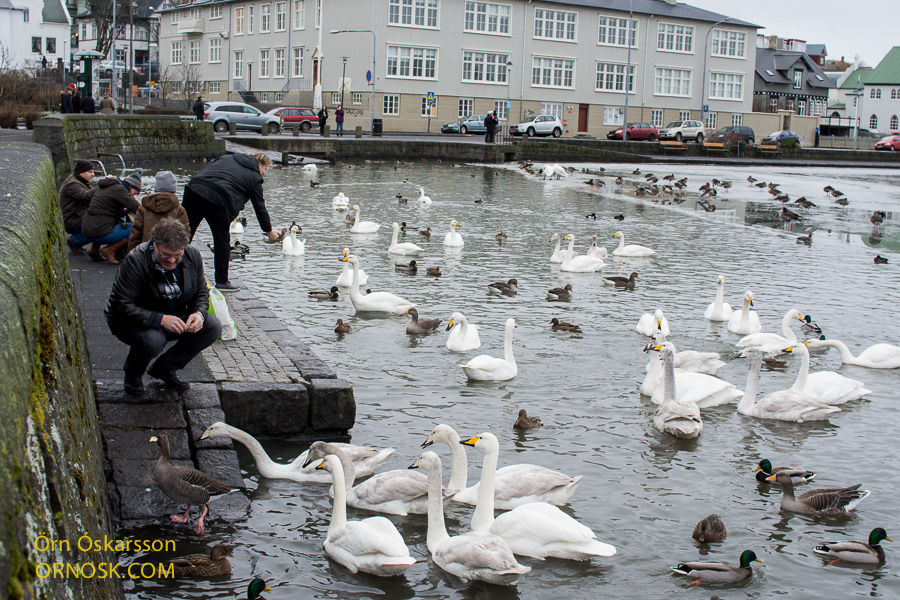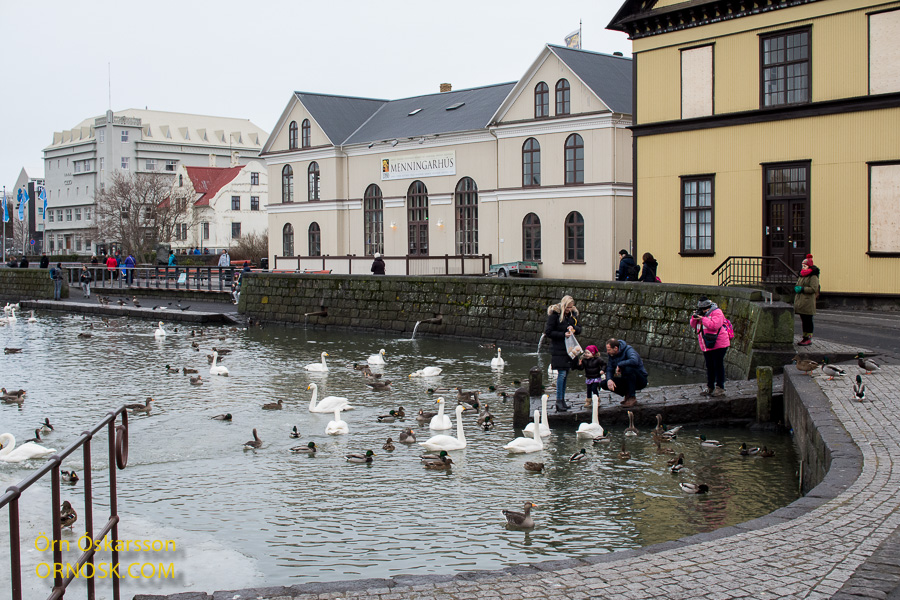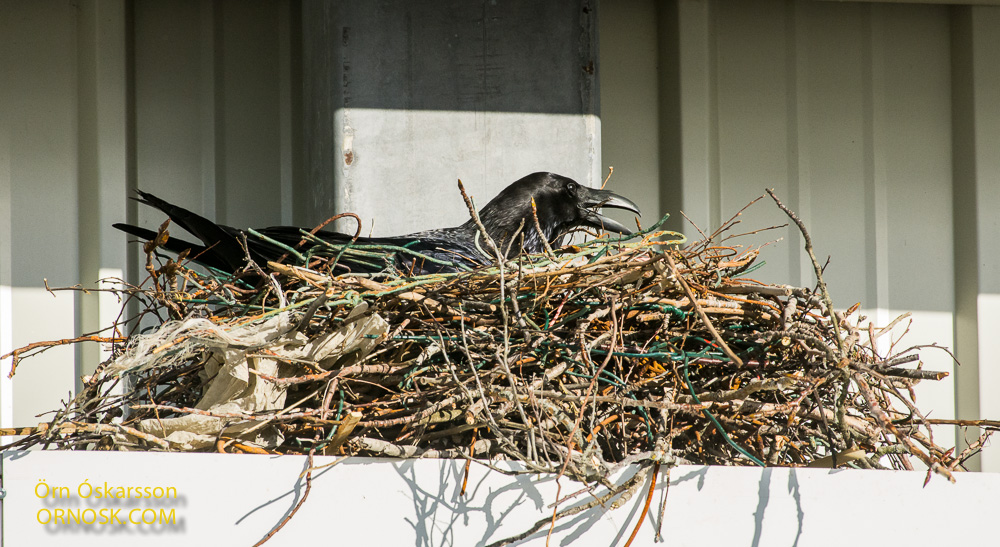
Breeding time has started for the Raven and as in previous years it has arrived back to its nesting place on a ledge in the building that houses the hardware store BYKO in Selfoss. In Iceland most Ravens lay their eggs in the end of March or the beginning of April.
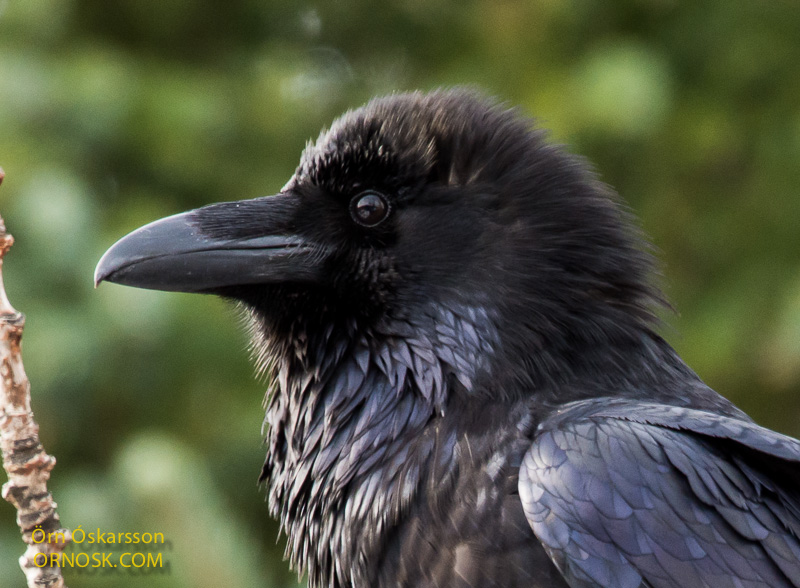
The Raven makes its nest in cliffs and rocks but lately they have started making their nests in buildings and even in trees which is actually not uncommon outside Iceland. Now however there are trees tall enough for them to consider that possibility.
In early spring Ravens can be seen in tree tops where they try to break off twigs and small branches. This seems to be a game for them but we don not approve of this behaviour.

